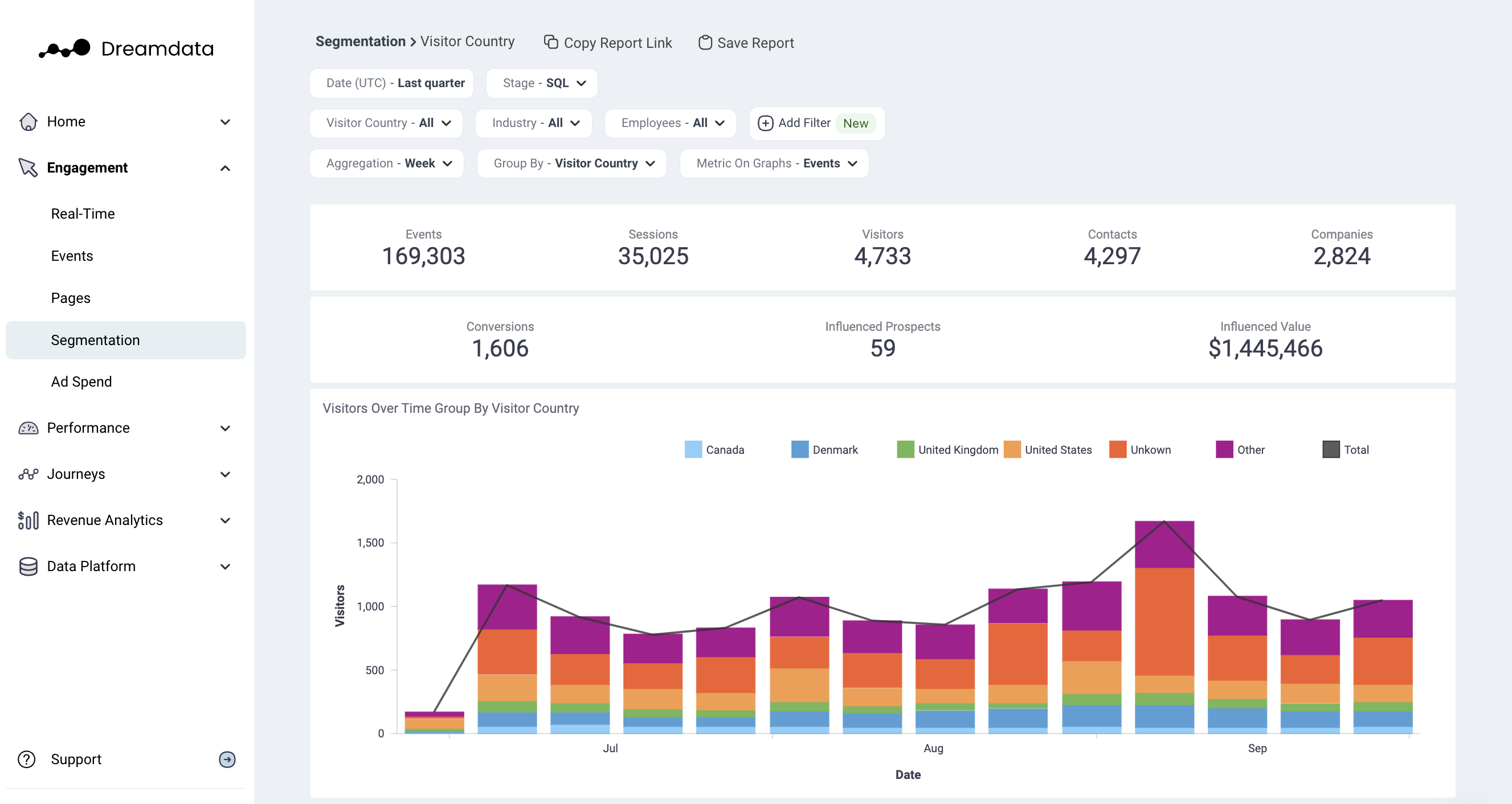Segmentation
The Segmentation report is a B2B version of GA4 Demographics reports and Tech reports.
Engagement → Segmentation = applied detailed segmentation of the people that you engage with based on geographic, technographic and firmographic information.
What can you do here?
You can classify your visitors’ technographics, firmographics and demographics.

What are the differences between Segmentation reports under 'Engagement' and 'Revenue Analytics'?
Revenue Analytics → Segmentation provides segmentation of the different stages ie. MQL, SQL, NewBiz etc. Whereas, Engagement → Segmentation allows for segmentation of the users that engage with you ie. industry, visitor country, device etc.
What are the differences between Segmentation, Events & Pages reports?
The segmentation provided on Engagement → Events / Pages are of a different nature. Engagement → Events / Pages segments each event or page i.e. each event or page is split by channel, whereas Engagement → Segmentation creates segmentation across events and pages.
Typical questions you will find answers to with the Segmentation report
Which industries do I engage with the most? Is the conversion rate higher for people from the US?
To identify the best performing segments, each segment is summarized based on total counts of views, visitors and companies as well as conversion and pipeline performance.
Do the number of employees for the companies affect the conversion rate?
